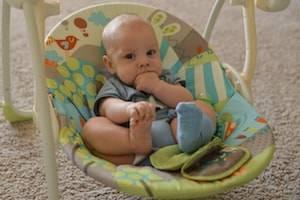
 It seems as if every day we are hearing about another product that has been recalled due to the safety of the product and the person using it. When it comes to products manufactured for children, safety regulations are a bit more extensive, because babies and children cannot decide for themselves what products they use. According to Kids in Danger, a children’s safety organization, there were 93 children’s product recalls in 2017, a 22 percent increase from 2016. Though parents want the best and safest products for their children, they are often unaware of the dangers certain defective products can pose.
It seems as if every day we are hearing about another product that has been recalled due to the safety of the product and the person using it. When it comes to products manufactured for children, safety regulations are a bit more extensive, because babies and children cannot decide for themselves what products they use. According to Kids in Danger, a children’s safety organization, there were 93 children’s product recalls in 2017, a 22 percent increase from 2016. Though parents want the best and safest products for their children, they are often unaware of the dangers certain defective products can pose.
The U.S. Consumer Product Safety Commission is the governing body that oversees product safety and recalls. Safety standards are measures created and put in place to ensure that products are safe and pose no hazards to consumers when used properly. Recently, new changes to safety standards were approved for four types of infant products:
1. Infant Sling Carriers
New rules for infant slings include a requirement that all slings must come with a permanently attached warning label and a diagram showing consumers how to properly wear and use the sling. The sling must also be able to carry up to three times the maximum manufacturer-recommended weight and be more durable to prevent fabric tears or seam separations.
2. Infant Bouncer Seats
Standards for infant bouncer seats now state that bouncers must be manufactured to have the warning label where it is more likely to be seen, such as near the top of the bouncer or near the baby’s head. The new label must also instruct consumers to use the bouncer only on the floor, always use provided restraints, and stop using the bouncer when the baby learns to sit up or reaches 20 pounds.
3. High Chairs
Both home and restaurant high chairs are now required to have rearward stability, meaning they are harder to tip over if a child is pushing or rocking back and forth. They must also be manufactured with a passive crotch restraint and a three-point restraint system.
4. Baby Changing Products
Baby changing products, including changing tables, changing table accessories, and contoured changing pads, have also seen safety changes. These products must now meet new testing requirements for structural integrity and stability. Instructions now have to be permanently attached or printed onto the changing equipment, and they must be clear for consumers to understand. Instructions must include the assembly, maintenance, cleaning, and use of the item.
Contact an Aurora Personal Injury Lawyer
Safety is always a big concern when it comes to children. The last thing you want is to purchase a product that is unsafe for your child, which is why the government takes steps to make products as safe as possible and set safety standards for products. Sometimes, you can use the product as intended, do everything right, and still have an accident. If this happens, you should get immediate help from an experienced Naperville product liability attorney. Contact Kinnally Flaherty Krentz Loran Hodge & Masur P.C. to discuss your case and discover what compensation you might be entitled to. Call our office at 630-907-0909 to set up a free consultation.
Sources:
https://www.cpsc.gov/Newsroom/News-Releases/2018/CPSC-Approves-New-Federal-Safety-Standard-for-Baby-Changing-Products
https://www.cpsc.gov/Newsroom/News-Releases/2018/CPSC-Approves-New-Federal-Safety-Standard-for-High-Chairs
https://www.cpsc.gov/Newsroom/News-Releases/2018/New-Federal-Standard-to-Improve-Safety-of-Infant-Bouncer-Seats-Takes-Effect
https://www.cpsc.gov/Newsroom/News-Releases/2018/New-Federal-Standard-to-Improve-Safety-of-Infant-Slings-Takes-Effect
http://www.kidsindanger.org/wp-content/uploads/2018_Recall_Report.pdf